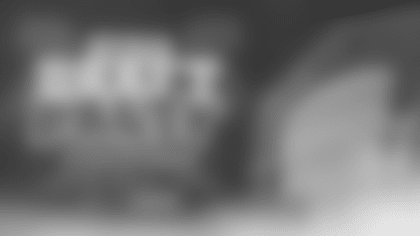*Commissioner Tagliabue Press Conference *
Special League Meeting
Dallas, Texas
March 8, 2006
* *
We just concluded two long days of meetings. Last night we went until about 1 a.m., and this morning we started around 7 a.m. and finished at about 6:59 and 59 seconds before the 7 p.m. deadline. The membership approved the Collective Bargaining Agreement and accepted the offer of the Players Association for the six-year extension of the Collective Bargaining Agreement by a vote of 30 in favor and two voting against.
It was really a tremendous effort by owners across the entire spectrum of the league, no matter how you define the spectrum – whether it's in terms of longevity, whether it's in terms of big-market, small-market or high-revenue, low-revenue. Everyone came together after these two full days of discussions and reached a consensus not only on the Collective Bargaining Agreement, but on some major new revenue-sharing features to support the ability of all teams to function well under the Collective Bargaining Agreement.
The consensus was forged really by all 32, but nine teams worked this afternoon to take two different concepts that had evolved over the last two days and meld it into one concept. The first concept had been developed in the last two days by the New York Jets and the New England Patriots, Woody Johnson and Jonathan Kraft. The second concept had been developed by the Pittsburgh Steelers and the Baltimore Ravens, particularly Art Rooney and Ravens President Dick Cass. Then over the luncheon hour, three other owners spoke with me about a concept for putting together the two proposals, the two different sets of ideas, and a process to take the Jets-Patriots concept and the Ravens-Steelers concept and blend it into one. Those three owners were John Mara, Jerry Richardson and Pat Bowlen. Then when we resumed this afternoon, all of those owners plus Jerry Jones and Arthur Blank played a critical role. We ended up with one single resolution that brought all of the different ideas together. It was sponsored by the nine teams that I just mentioned: Giants, Steelers, Patriots, Ravens, Falcons, Panthers, Broncos, Jets and Cowboys. And that's what we presented to the membership and explained it. Once it was all explained, we had the vote and it was adopted without any changes. The blending of the two proposals into one, which was developed this afternoon between 3:15 and 6 p.m., was accepted on the basis that it was presented and developed by those nine teams. In addition to Art Rooney, Dan Rooney was involved in that process. In addition to Arthur Blank, Rich McKay was involved in that process, plus all the owners I've already mentioned. I'll be glad to take questions.
Q: Can you discuss the new revenue sharing agreement?
PT: The revenue sharing basically is a commitment of almost $500 million over the first four years of the deal and then several hundred million additional dollars over the last two years of the deal. I think the total amount over the life of the deal gets to over $850 or $900 million of incremental revenue sharing to be funded in some significant degree by the high-revenue clubs. "High-revenue" includes the top five, the next group, six through 10, and to a lesser degree the clubs who rank 11 through 15. All of those clubs in differing proportions ended up making the alliance or the commitment to fund the revenue sharing.
Q: How will those funds be redistributed among the membership?
PT: The lower-revenue teams will draw from that fund. The overall concept was geared to the idea that when a team spends to the midpoint between the salary cap and cash over the cap on an average













